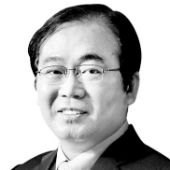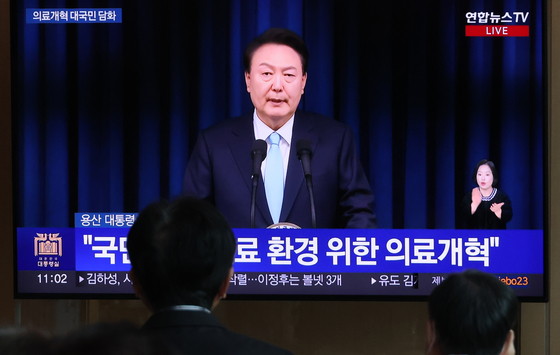Successful reform demands consensus building

Lee Ha-kyung
The author is a senior columnist of the JoongAng Ilbo.
The government under Korea’s first elected civilian president Kim Young-sam in 1995 embarked on judiciary reform, led by his chief policy secretary Park Se-il, a law professor at Seoul National University. The reform was aimed at institutionalizing law schools to increase the number of lawyers, the lowest in the world. A judiciary reform committee was set up at the recommendation of the Supreme Court. Representatives from the court, the prosecution and lawyers joined the council together with presidential aides to discuss who should lead the reform — and for whom.
The council agreed to increase the number of new lawyers — capped at 300 per year at the time — to 500 in 1996, 600 in 1997 and between 1,000 and 2,000 from 2000. The road map was respected under the next liberal presidents, Kim Dae-jung and Roh Moo-hyun. Under conservative president Lee Myun-bak, the first law schools opened in 2009. From then on, 1,700 lawyers get their licenses every year.
President Yoon Suk Yeol’s idea of lifting the enrollment quota for medical schools drew overwhelming public support. But the protracted medical unrest from doctors’ walkouts has been unsettling the people. A veteran lawyer who had communicated with the presidential office of Kim Young-sam while working at the National Court Administration stressed the need for the Yoon administration to have sufficient discussions with the medical community instead of pushing ahead with the quota hike after a sudden announcement. “I cannot understand why the president set the specific target of 2,000 new admissions to medical schools each year for the next five years without leaving any room for compromise,” he said.
The number 2,000 itself is puzzling as no experts have ever suggested the increase. The authors of three institutions who submitted their recommendation to the presidential office proposed a soft landing, or an increase between 750 to 1,000 a year. The idea of medical reform garnered strong public support in the beginning, but it will not likely help the governing People Power Party (PPP) win the April 10 parliamentary elections.

Increasing the number of doctors should be the start of the medical reform. But just because the direction of reform is right doesn’t ensure its success. Korean doctors have always been defensive and combatant. The medical school quota decreased to 351 under the Kim Dae-jung administration amid a sharp conflict between doctors and pharmacists in 2000. The Moon Jae-in administration in 2020 pushed for a quota increase by 400, but the plan was scrapped in the face of strikes by medical school students who boycotted the state exam for medical licenses. The Yoon Suk Yeol administration is pushing for the plan based on legal justification. Former legendary U.S. Supreme Court Justice Oliver Wendell Holmes Jr. famously said, “The life of the law has not been logic, it has been experience.” Despite the requirement for deep communication and understanding, the Yoon administration has been too rigid and coarse.
Even the Joseon kings, who succeeded in achieving reforms, had not been so rough. King Sejong the Great, who introduced a national tax reform in 1428, declared a universal tax on rice fields. But he didn’t execute it immediately. He sent out 300 government officials to tap the opinions of 170,000 farmers. Considering the apparent output disparity from regional differences, the king put off the plan. The tax reform was finally implemented 61 years later under King Seongjeong after rigorous debates and trials.
The Little Ice Age in the 17th century spiked famine, plague and witchcraft in Europe. The famine in China triggered a farmers’ revolt to replace the Ming Dynasty with the Qing Dynasty. The death toll also escalated in Joseon due to the lengthy drought. King Yeongjo, who grew up outside the royal palace, came to power amid the devastation. He was well aware of the grievance of the common people. On the throne, he drastically reduced the heavy burden on the commoners from conscription and related tax. He paid heed to the hardship on the ordinary people.
South Korea’s founding President Syngman Rhee assigned his communist-turned-political rival Cho Bong-am as his agriculture minister to spearhead farmland reform. The reform was able to bear fruit after Kim Sung-soo, a rich landlord and head of the opposition party, willingly joined the reform by giving up his land. The reform that transformed tenant farmers into self-employed farmers became Korea’s first economic democratization scheme. The action helped prevent South Korea from being communized by North Korea’s invasion in 1950 and fueled capitalist development dubbed the Miracle on the Han River.
Park Chung Hee, a general who took power through a military coup, paid attention to a set of economic reform recommendations by an intelligentsia group behind respected magazine Sasanggye led by Chang Chun-ha, his biggest critic. His ideas of a government-led growth model, industry-focused modernization, promotion of infrastructure industry, diversification of alliance beyond the United States, the importance of personal saving, frugality and exports all were reflected in President Park’s industrialization policy. The Sasanggye also advised the fledgling government to break the ice with Japan.
President Yoon must change. He must talk with the medical community by putting all possible agendas on the table. As soon as the election is over, he should replace his staff with straight-talking figures. The president must be able to communicate with the opposition to embody politics of engagement if he really wants to get any of his reforms done.










with the Korea JoongAng Daily
To write comments, please log in to one of the accounts.
Standards Board Policy (0/250자)